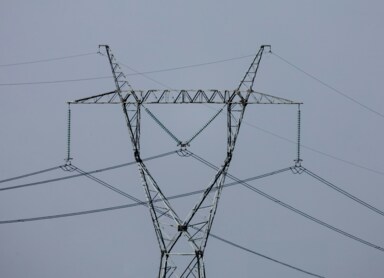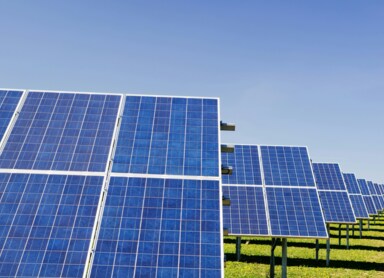Company electricity balancing - what does it involve?
The electricity system in terms of the whole country can be compared to a large electrical circuit. At all times during its operation, the amount of energy consumed by users must agree with the amount of energy generated. To cope with disturbances of this ratio, a commercial balancing system was introduced. How do you effectively balance electricity in a company?
Basics of electricity balancing for companies
In principle, the amount of energy taken from the electricity grid should be equal to the amount of electricity generated. Unfortunately, this is an ideal situation that has little to do with practice. The National Power System (NPS) does not allow for large-scale energy storage. Thus, the NPS receives energy generated by:
- classic coal-fired power plants;
- combined heat and power plants;
- RES power plants.
Both electricity consumption and generation fluctuate over time, and making precise forecasts of consumption is very difficult. A company may need more or less electricity depending on its business model, work schedules, production line load or machinery upgrades. In turn, the amount of energy generated may suddenly decrease due to the failure of particular parts of the network.
What to do in such a situation? After all, it is not possible for a company to take electricity that is simply not available in the relevant transmission network or for the operator to cause the excess electricity produced to "evaporate" from the grid. Such energy has to be purchased (in the case of under-contracting) or sold (in the case of contracting).
What is electricity balancing?
This is where electricity balancing comes in. It operates both on a national scale and for individual DSOs (Energa, Enea, Tauron or PGE Dystrybucja), but also for individual consumers. We all participate in the balancing system - from the smallest households to large factories.
In the case of individual consumers, balancing takes place on its own, so to speak, as the energy seller will at the same time be the POB, i.e. the entity responsible for commercial balancing. Large customers are in a slightly more complicated situation. It will often be more cost-effective to conclude separate contracts for the sale of electricity and for its balancing. What is more, balancing for one entity may be handled by several POBs, e.g. in a situation where a company has four plants, each in a different area of the country (or, to be more precise, with separate meters, as the ownership of electricity is transferred when energy flows through the meter).
The POB's task is primarily to report to the TSO operator all electricity sales contracts concluded with users of the transmission system. It also carries out the settlement of energy consumed or supplied in relation to that declared.
Methods and tools for energy balancing within an enterprise
The rules for balancing electricity in an enterprise are set out in the contract concluded between the user and the seller (if it is also the POB) or the POB (if it is a separate entity from the electricity seller). Each electricity sales contract indicates how much electricity the user will consume in a given unit of time. The more the actual amount of energy consumed deviates from this declaration, the higher the costs in connection with balancing energy arise, as the purchase or sale of energy under market conditions is usually not very profitable.
The smallest business customers (with a demand of up to 3 GWh) are balanced without additional contractual restrictions. However, the more energy a company needs to operate, the more caveats appear in the contracts that protect the seller or POB. These can consist of, for example:
- the need to renegotiate terms if fluctuations exceed a certain level;
- the need to report changes in electricity demand under penalty of contractual penalties.
The first method of balancing is therefore to conclude a favourable contract with the POB. Many of the terms and conditions can be negotiated! It is also important to remember to inform the POB of changes in demand as soon as possible. This gives him a better chance of a favourable market transaction or, for example, the transfer of excess energy to uncontracted customers. In this way, sanctions for fluctuations or increases in the kilowatt-hour price can be avoided.
Another way may be to obtain a concession to sell electricity. In such a situation, once the company has received excess electricity, it can simply resell it to another market participant.
It is worth remembering that consumers - with the exception of the largest traders - are not charged directly for balancing electricity. Nevertheless, regular exceeding of the declared limits may entail an increase in the price of electricity. In the case of industrial consumers, the Energy Regulatory Office does not - apart from the current transitional period - impose maximum electricity prices.
Energy tariffs are also used as energy balancing tools. Entrepreneurs can choose between A, B and C tariffs, but also individual types of each tariff. The C tariff can be used as an example. In the C21 variant, the price of electricity is the same 24 hours a day, but the C22 variant is the solution for companies that operate mainly in the evening and at night. During the day, energy is more expensive, but the company also uses less energy.
Yet another way to balance energy is to install a three-phase installation instead of a single-phase one. In companies using equipment with a high electricity demand, this is standard. By distributing the phases correctly, they will be loaded more or less evenly, so energy deficits will be small and occur infrequently.
Energy balancing: how to do it efficiently?
Balancing a company's electricity can be made much more efficient if the company decides to use green energy from renewable sources. This applies not only to solar energy, but also to geothermal, hydro, wind or biomass energy. In all cases, however, the general principle is similar and can be reduced to a simple statement: "better balancing = lower bills".
Balancing photovoltaic energy. How do you go about it?
By choosing to install a photovoltaic installation, the entrepreneur gains at least partial energy independence. He is less affected by changes in electricity rates due to fluctuations in consumption.
Photovoltaics can also be supplemented with energy storage facilities, which are charged during periods of overproduction (e.g. on sunny days) and return the stored energy during periods of shortage (e.g. at night).
Photovoltaic energy balancing is strongly linked to the concept of self-consumption. It defines the current demand for electricity and should be correlated as strongly as possible with the amount of electricity generated.
Keep in mind that not all photovoltaics offer an equally strong guarantee of continuity of electricity supply. A hybrid technology working with a 3-phase inverter and energy storage will work best.
Commercial balancing of energy - how to choose a POB?
The general rules for energy balancing are set out in the Energy Law1 and the relevant Decree of the Minister of Climate and Environment2, as well as the Renewable Energy Sources Act3. However, the legal regulations are so complex that most consumers find it difficult to choose a POB if they have to do so.
If you also have doubts in this regard, we encourage you to take a look at our offer. REO offers a comprehensive commercial balancing service. We support end-users, including industrial customers, DSOs and RES power generators.
1. https://isap.sejm.gov.pl/isap.nsf/DocDetails.xsp?id=wdu19970540348
2. https://isap.sejm.gov.pl/isap.nsf/DocDetails.xsp?id=WDU20230000819
3. https://isap.sejm.gov.pl/isap.nsf/DocDetails.xsp?id=WDU20150000478






